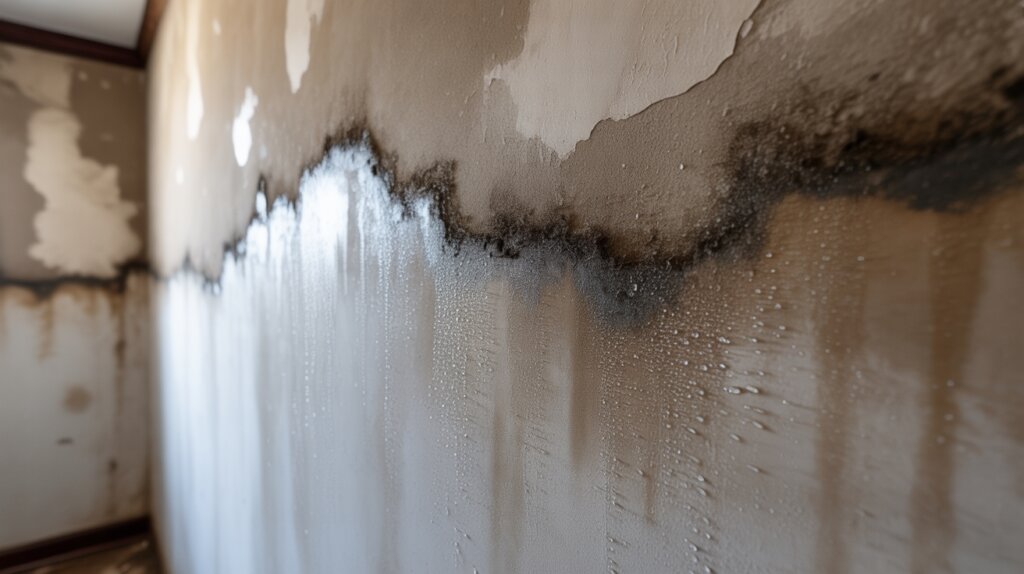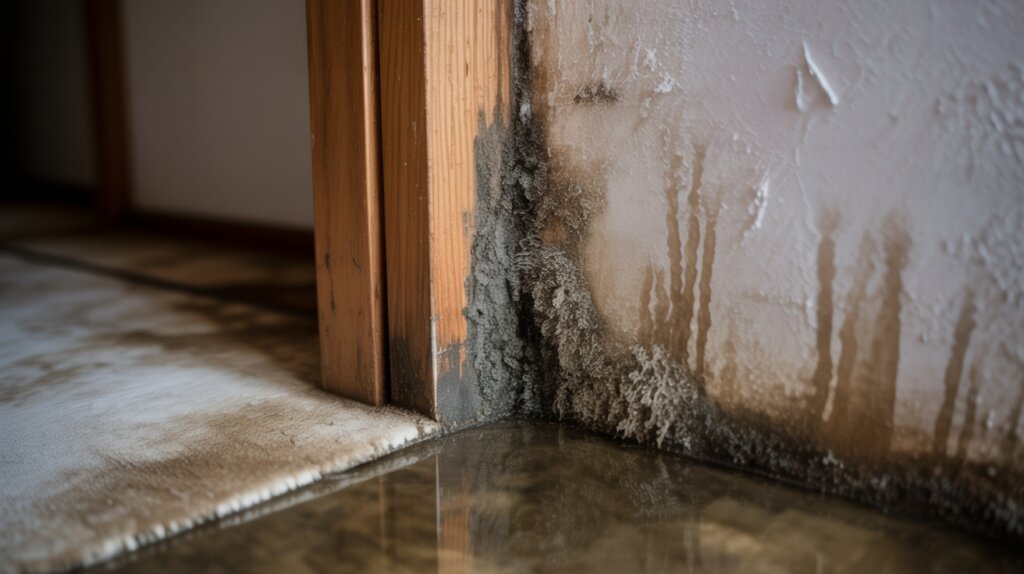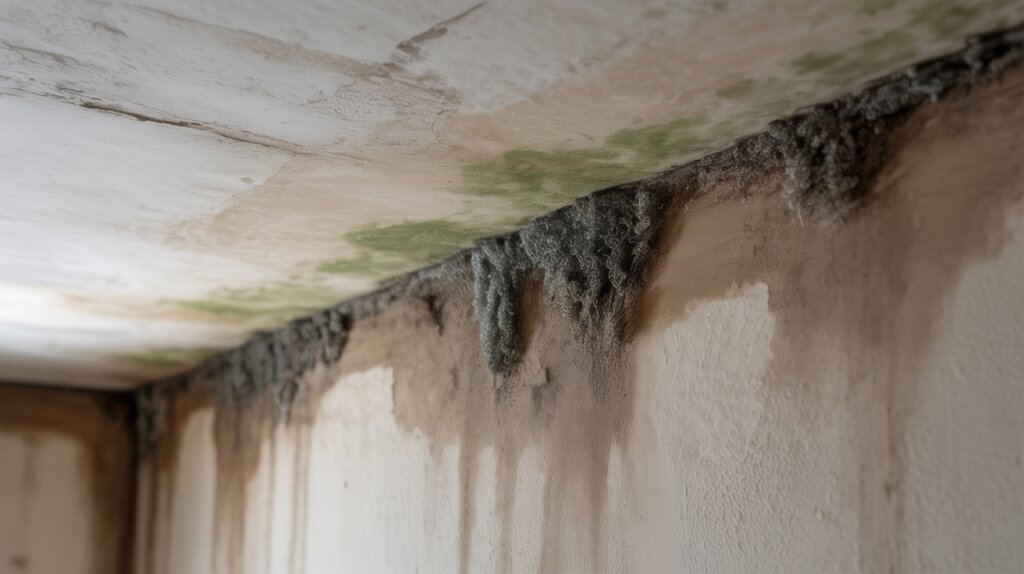Selling a home comes with many responsibilities, and one of the most important is being honest about its condition. If you hide mold or water damage, you risk legal trouble and angry buyers. Many sellers are unsure about what to share and how to do it right.
Buyers can sue even after the sale if they discover hidden problems. Laws in most states require you to reveal mold and water issues. Failing to follow these rules can lead to costly disputes and lost trust.
The best way to disclose mold and water damage to buyers is to be upfront and provide all known details in writing. This protects you and helps buyers make informed decisions.
It also makes the selling process smoother and less stressful. This blog will guide you step by step so you can avoid mistakes and feel confident when selling your home.
Understanding Your Legal Obligations

When selling or renting a property, you must tell buyers or tenants about any known hazards. This includes environmental issues like mold and water damage. Federal law requires you to disclose certain dangers, and state laws may require more.
Additionally, disclosing issues such as property damage can help prevent legal complications and reassure buyers about transparency. If you do not follow these rules, you could face fines or legal problems. You should keep records of all problems and any repairs.
Proper documentation shows you are following the law. Check your state’s rules because they can be different from federal requirements. If you are unsure about your duties, you should talk to a real estate lawyer. Legal advice can help you avoid future disputes.
Common Signs of Mold and Water Damage
You must know the common signs of mold and water damage to meet your disclosure duties. Early detection helps prevent mold and keeps you compliant with laws like California Civil Code § 1102. If you miss these signs and fail to disclose them, you could face lawsuits or lose your sale contract.
A strong musty smell often means there may be hidden mold, even if you cannot see it. Water stains or dark spots on ceilings, walls, or floors often show past or ongoing leaks. Peeling or bubbling paint usually means moisture is trapped under the surface due to water getting in. Recognizing water intrusion signs early can help you address issues before they worsen and become costly repairs.
Any visible mold, such as black, green, or white patches, should be taken seriously. If you see mold, you need to fix the problem and tell potential buyers. Noticing these signs early can protect your health and avoid legal problems. Additionally, understanding home’s market worth can help you make informed decisions about disclosing issues and negotiating repairs or sale terms.
How Mold and Water Damage Affect Property Value

You’ll see mold and water damage cut your property’s listing price, as buyers factor in repair costs and health risks. Under laws like the Residential Lead-Based Paint Hazard Reduction Act and state disclosure rules, you must disclose these issues, giving buyers stronger negotiation power. Ignoring these requirements can expose you to legal liability and further reduce your home’s market value.
Additionally, setting a reasonable price can help mitigate the impact of such issues by attracting more serious buyers who understand the property’s condition. Conducting a thorough title search before listing can also reveal underlying issues that might affect the sale process.
Impact on Listing Price
Mold and water damage can lower your listing price. These problems make buyers and lenders cautious. If you do not fix them, you may have to sell for less.
The law requires you to tell buyers about any mold or water damage. If you hide these issues, you could face legal trouble. Honest disclosure affects how people view your property.
Buyers may trust you less if they know about damage. This can mean fewer offers and a longer time on the market. Appraisers might also lower your home’s value.
If repair costs are high, buyers may offer less money. Even after repairs, your home could have a bad reputation. This could affect its value for years.
Buyer Negotiation Leverage
Buyers have strong negotiation power if a property has mold or water damage. These issues lower the property’s value and raise safety concerns. If buyers find such problems, they can ask for repairs or a lower price.
Home inspections often reveal hidden damage or health risks. Buyers should use inspection results to negotiate better terms. If sellers do not fully disclose defects, buyers may have legal rights to renegotiate.
California law requires sellers to share all important details about a property. If sellers delay or hide information, buyers can refer to these laws. Buyers can then request repairs, credits, or even cancel the deal if damage is serious.
State and Local Disclosure Requirements
State and local laws require sellers to disclose mold or water damage. These rules vary by location, so you must check your area’s requirements. If you sell a property, always review the local and state disclosure laws.
A clear understanding of title issues can help you identify any legal problems that need resolving before disclosure. If you do not follow these laws, you may face fines or legal problems. Buyers can cancel the contract or lose trust in you. Delays or lawsuits could happen if you skip these steps.
Additionally, understanding home sale processes can help you navigate disclosure obligations more effectively. Consult your state’s real estate website or an attorney for advice. Careful attention to these laws protects you from trouble. Always take your disclosure duties seriously.
When to Hire a Professional Inspector

If you notice persistent odors, visible mold, or unexplained health symptoms, you should consult a certified inspector immediately. A professional assessment provides objective documentation, which is crucial for compliance with state disclosure laws and can protect you from liability under statutes like the Residential Lead-Based Paint Hazard Reduction Act (42 U.S.C. § 4852d).
Expert findings also help you accurately inform buyers, ensuring you meet your legal obligations. Additionally, understanding the potential impact of housing prices are expected to rise can influence the timing of your disclosure and sale process. Conducting a thorough inspection can also help identify comparable homes, which is essential for properly pricing your property and ensuring a smooth sale.
Signs You Need Help
It is important to know when you need a professional inspector for mold or water damage. Early detection can protect your property and help you meet state disclosure laws. Call an expert if you notice any warning signs.
A strong musty smell that does not go away may mean hidden mold or water problems. Dark stains on ceilings or walls often point to water leaks or drainage issues. Peeling paint or warped surfaces suggest that moisture is getting inside.
If anyone in the home has allergies or breathing problems, mold could be the cause. Take action quickly if you spot any of these signs. Acting fast helps you avoid bigger problems and legal issues.
Benefits of Expert Assessment
Expert assessment offers a clear benefit. A professional inspector can find mold or water damage that you might miss. This helps prevent bigger problems later.
Certified inspectors use special tools like moisture meters and infrared cameras. They also take air samples to check for hidden mold. These methods are more accurate than a simple visual check.
Inspection reports can help meet state disclosure laws, such as California Civil Code § 1102. If you need to show buyers proof, these reports are useful. They also protect you from legal issues.
If you use an expert, you lower the risk of missing serious problems. This can stop disputes or expensive repairs in the future. Buyers may trust you more, making negotiations smoother.
Gathering Documentation and Repair Records
Gathering documentation and repair records is necessary to meet legal disclosure rules about mold and water damage. If you have complete records, you can protect yourself from legal problems. Proper documentation can prevent future disputes with buyers. You should collect inspection checklists from licensed professionals.
Repair records should include dates, invoices, and contractor names. Photos showing the damage before, during, and after repairs are also important. If you have any official emails or letters with insurers or remediation experts, keep them. These records show the property’s condition over time. If you keep everything organized, you can prove you acted honestly and followed the law.
Additionally, understanding the market value of the property can help you determine the appropriate disclosures needed. Incorporating inheritance tax considerations into your documentation process can also be beneficial, especially if the property’s value has changed significantly since inheriting it.
Writing an Effective Disclosure Statement
When crafting your disclosure statement, you must clearly identify all known mold and water damage issues, as required by state statutes such as California Civil Code § 1102. Be sure to attach thorough repair records and evidence of completed remediation, since buyers have the right to inspect these under most disclosure laws.
A comprehensive disclosure can help prevent future legal disputes and mitigate potential liabilities. Accurately presenting this information not only fulfills your legal obligations but also reduces your liability for future disputes. Additionally, include any relevant plans and permits that relate to repairs or alterations made due to the damage.
Detailing Known Property Issues
State laws require you to tell buyers about all mold or water damage issues. You must list every known problem, even small ones. This includes visible mold, leaks, and any water intrusion.
You should also explain where the problems happened and how big they were. If you fixed anything, say what was done and if a professional checked it. The Residential Property Disclosure Act makes honest reporting a legal duty.
If you do not disclose these issues, you could face lawsuits or lose money. Mold exposure can harm your family’s health. Hiding water damage can break trust with buyers.
Clear and honest disclosure helps protect your reputation. It also keeps you safe from legal trouble. If you are unsure, always ask a professional for help.
Providing Repair Documentation
You must give clear repair records for any mold or water damage that was fixed. List all receipts, contractor invoices, and inspection reports with your disclosure. If you filed an insurance claim, add copies of claim forms and settlements.
Buyers have the right to know about past claims in many states. Include environmental test results, such as mold spore counts or moisture readings, if available. Complete records show you handled problems correctly.
Proper documentation follows disclosure laws like the Residential Property Disclosure Act. These records help protect you from possible legal problems after the sale. Detailed files help buyers trust you and reduce the risk of disputes.
Stating Remediation Efforts
After you’ve gathered all documentation, your disclosure statement must clearly describe the remediation steps taken to address mold or water damage. Buyers deserve to know exactly how you’ve mitigated environmental hazards to ensure property integrity.
Detail every action, referencing professional remediation services, methods used (such as HEPA filtration or antimicrobial treatments), and any certifications received. According to most state real estate laws, omitting such details can result in legal consequences and loss of buyer trust.
To evoke the gravity of thorough remediation, include:
- The scope of affected areas and how each was treated.
- Specific remediation companies hired and methods applied.
- Post-remediation verification or clearance reports.
- Any warranties or guarantees on completed work.
Full transparency protects both you and your buyer, fulfilling your legal obligation.
What to Include in Your Disclosure
You should disclose any known mold or water damage. List all past or present water leaks, visible mold, or moisture problems. Include the location, date, and size of each issue. Proper documentation of damage can help substantiate your disclosures. State any repairs or actions taken to prevent mold. These can include fixing leaks, adding vapor barriers, or using dehumidifiers.
Attach any inspection or repair reports from professionals. Many states, such as California, require this disclosure by law. If you do not disclose known problems, you may face legal trouble. Always provide clear, complete, and truthful information about any issues. If there are conditions that can cause mold, like humidity or drainage problems, mention them.
Documentation helps buyers understand what was done. Giving honest details protects both you and the buyer. Understanding how hidden damage can impact a property’s value and safety emphasizes the importance of full disclosure and proper documentation.
Communicating With Potential Buyers
Direct communication with buyers is important once you have your disclosure ready. You must share all facts about mold and water problems. Buyers need clear information to understand the home’s safety and condition. Share all mold and water issue details directly with buyers so they clearly understand the home’s condition and safety.
Laws require you to tell buyers about any past or present issues. You must explain what steps you took, such as hiring professionals for mold cleanup. Providing reports and documents helps build trust.
If you know about water leaks, you should list each event and how it was fixed. Sharing mold cleanup certificates is also necessary. Ongoing maintenance efforts should be explained as well.
Sellers must meet both state and federal rules for disclosures. You should confirm you have followed these laws. If you do, you protect yourself and help buyers make informed choices.
Handling Buyer Questions and Concerns
When buyers ask about mold and water damage, you must clearly address potential health risks, as required by state disclosure laws such as California Civil Code §1102. You should explain the specific remediation steps taken, referencing any professional standards or certifications involved. Always provide documentation—like inspection reports or repair receipts—to support your disclosures and protect yourself legally.
Addressing Health Implications
Mold and water damage can cause health problems. If you ignore these issues, you may put buyers at risk. Mold can affect breathing and cause other serious health issues.
The Environmental Protection Agency (EPA) says mold exposure may lead to allergies or asthma. Children and older adults are at higher risk. If someone already has health problems, mold can make them worse.
Buyers may worry about hidden mold or water damage. They might fear long-term health risks for their families. If water keeps leaking, mold can keep growing.
You must tell buyers about any known mold or water problems. Full disclosure is required by law in most states. If you hide these issues, you could face legal trouble.
Explaining Remediation Efforts
Buyers want to know how you fixed mold and water damage. You should clearly list each step you took to solve the problem. This includes finding moisture sources and removing damaged materials.
Professional mold cleanup services should be mentioned if used. Many areas require you to share details about how you fixed these issues. You must describe the cleaning methods, what was replaced, and steps taken to prevent future problems.
Buyers may ask for a timeline and details of the work done. You should be honest about when and how the repairs happened. If you followed EPA or local rules, mention this for added trust.
Clear explanations help buyers feel confident about the home’s safety. Good communication can prevent confusion during the sale. If you explain everything clearly, buyers are more likely to trust you.
Providing Documentation Proof
You need to collect clear proof of repairs for mold and water damage. Buyers often ask for this proof before moving forward. It is also required by law to show what you have fixed.
Documentation should include invoices from licensed contractors. You should also provide before-and-after photos of the damaged and repaired areas. Inspection reports and warranties are important too.
If you give these documents to buyers, you build trust and protect yourself from legal issues. This shows you have handled the hazards properly. If you fail to provide proof, you may face legal problems later.
Negotiating Repairs or Price Adjustments
If you find mold or water damage during a home sale, you can negotiate repairs or ask for a price drop. Most states require sellers to disclose such problems. You may ask the seller to fix the damage before closing.
If the seller will not repair the damage, you can request a lower purchase price. This can help cover your future repair costs. Negotiation works best if you raise the issue right away.
State laws often require written agreements for repairs or price changes. You should document all negotiations and agreements in writing. Clear records help protect both buyer and seller from later disputes.
Working With Real Estate Agents
Working with a real estate agent helps you handle mold or water damage disclosures correctly. Agents know the laws about environmental hazards and disclosure deadlines. They make sure you follow all legal rules when selling your property.
A good agent explains which hazards you must report. This lowers your risk of forgetting important details. If you are unsure, your agent can clarify what needs disclosure.
Agents deliver the right documents to buyers on time. Timely paperwork helps you avoid legal trouble or delays. If you miss something, your agent can help fix the issue quickly.
Your agent helps you write honest disclosures that do not cause unnecessary worry for buyers. Accurate information builds trust with potential buyers. If you need to negotiate, the agent can help protect your interests.
Agents balance honesty with smart negotiation. They support you through the whole disclosure process. If you want a smooth sale, working with a skilled agent is important.
Protecting Yourself From Future Liability
You must still disclose any known mold or water damage after the sale closes. State and federal laws require these disclosures. If you do not disclose, you could face legal problems later.
Sellers should keep records of all repairs and maintenance for water or mold issues. These documents show you took steps to fix problems before selling. Courts may use this information to decide if you met legal requirements.
If you filed insurance claims for water or mold damage, tell the buyer in writing. Written disclosures help protect you from future disputes. If you are organized and honest, you lower your risk of lawsuits after closing.
Benefits of Full Transparency in Real Estate Transactions
Full transparency in real estate deals helps both buyers and sellers. It builds trust, prevents problems, and meets legal requirements. Sharing details about mold and water issues is not just helpful—it is often required by law.
If you disclose mold prevention steps and past water leaks, you reduce legal risks. Laws like the Lead-Based Paint Hazard Reduction Act require you to share known problems. Not following these laws can lead to lawsuits or lost sales.
Buyers feel more confident when they know all facts about a property. Sellers also protect their reputation by being honest from the start. If everyone knows the full story, negotiations are smoother and fairer.
If transparency is a priority, both sides can agree on the property’s true value. This approach helps avoid surprises after the sale. It also ensures both parties can move forward with confidence.
Conclusion
If you need to sell a house with mold or water damage, clear disclosure is the best way to protect yourself. Honest communication helps buyers understand the condition of your property. If you follow disclosure laws, you can avoid legal issues and build trust with buyers.
If you want a quick and easy sale, we buy houses for cash in any condition. This means you don’t need to worry about repairs or hidden problems. If you are unsure about the process, a cash sale can make things much simpler for you.
If you are ready to sell your home without hassle, contact Greg Buys Houses today. We handle the paperwork and buy homes as-is. Let us make your selling experience smooth and stress-free.

